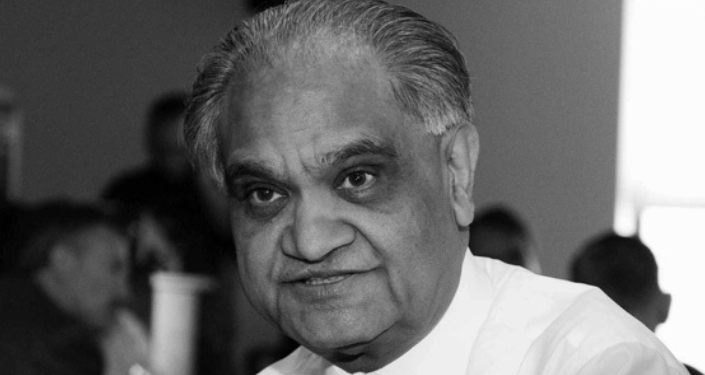Change fails because people resist, right? But the current pandemic has shown that change can happen swiftly and effectively, challenging long-held beliefs and inviting us to rethink the requirements for a successful shift.
Continue readingLeading Edge: June introduction from John Withers CMgr FIML, Chair of the Board
Welcome to the June edition of Leading Edge.
As we prepare to enter a new IML Membership year, I am eager to share this month’s update about your Institute on behalf of your IML Board.
First of all I would like to thank all our Members who attended our first ever completely virtual Annual General Meeting last month. It was very encouraging to see so many Members attend the meeting despite the challenges that this extraordinary period brings. I’d also like to use this opportunity to farewell and thank the departing board members for their professional contribution and passion for IML ANZ. I’d also like to congratulate Marie-Louise Pearson FIML on her re-election.
I am extremely pleased to introduce the latest instalment of our Intentional Leadership series – Leadership Essentials. This program has been designed to be fully virtual and it is offered as a management and leadership toolkit that is aimed at developing the core (and essential) skills required for management success. By offering the program virtually, we’re opening the opportunity to managers and leaders across Australia and New Zealand. We have listened to IML ANZ’s growing number of professionals in regional centres who have indicated a need for more flexible learning options. Please visit our website for more information about the Essentials program, and I encourage you to direct colleagues, friends or anyone you think might need access to essential leadership skills development to this comprehensive new resource.
We are seeing increased Membership engagement in many areas of our business, despite or because of the current pandemic, which is encouraging as well as demonstrating the value of being part of this organisation.
As Chair of the IML ANZ Board and on behalf of the Institute I remain optimistic about the futures of both Australia and New Zealand as both countries emerge tentatively from their respective COVID-19 lockdowns.
My personal view is that Membership with IML ANZ has always been important, but arguably it is even more critical in times of crisis. The events that we have witnessed so far in 2020 have underscored the importance of belonging to a professional community of likeminded managers and leaders. At IML ANZ we believe that easy access to benefits such as one-to-one mentoring, complimentary webinars, extensive learning resources, and a wide variety of networking opportunities serve to reinforce our ability to lead well through tough times. Leadership matters, and its importance is only amplified when times are tough.
If you haven’t already, I invite you to renew your Membership with us so that we can continue to support you on your leadership journey. If you have questions or would like to talk to someone about your renewal, please feel free to get in touch with our dedicated Membership team on 1300 661 061 in Australia or 0508 465 269 in New Zealand.
Finally I would like to thank you for your commitment to the Institute and to the cause of sound management and leadership.
John Withers CMgr FIML
Chair of the Board
Three ways to kick start your cybersecurity and privacy health check
Many businesses may not return to operating the way they did before the coronavirus lockdown. Now that most of your team use third party tools and resources for operating remotely, how can you properly assess these tools for long-term and more permanent use and ensure good security and privacy practices are in place?
Continue readingRebuilding organisational culture post-pandemic
If you want to change the culture, you need to change the rules of belonging. How do we ensure that we bring forward the best of our pre-pandemic culture and leave the worst behind?
Continue readingHow to show strong leadership when transitioning back to the physical workplace
We list practical ways for leaders to help themselves, individual team members and the organisation to overcome the challenges and concerns that come with returning to the physical workplace.
Continue readingVirtual Development Day: Watch our recorded sessions
Click on the link below to enter your details and get access to the recorded sessions from our first ever IML ANZ Virtual Development Day. You will be redirected to the sessions upon submission.
Leading Edge: May introduction from John Withers CMgr FIML, Chair of the Board
Welcome to the May edition of Leading Edge.
Across Australia and New Zealand, we’re fortunate that we are starting to see hope as restrictions begin to ease at national, state and local levels. As we prepare to lead our workforces out of the crisis, the primary concern will be of security for jobs and business and safety for our people, without whom we will not succeed.
The priority of IML ANZ and the Board is to assist our Members as we begin to emerge from the immediate impact of this unprecedented pandemic. We can only do that by adapting to the current economic climate and having a realistic outlook for the remainder of the year.
The Board remains firmly committed to enabling the Institute’s vision of creating better managers and leaders – this vision remains through good times and bad. Therefore in this edition of Leading Edge, we focus on the activities that will help managers and leaders on the road to recovery. I’d particularly like to highlight the upcoming Virtual Development Day on Friday 22nd May. I’m sure you agree that now more than ever it is essential for decision-makers to be fully equipped and prepared with the skills needed to lead well. Never before have those misnamed ‘soft skills’ been harder and more needed. IML has assembled six of our very best leadership facilitators to assist managers and leaders with the challenges that lie ahead. Please join these complimentary sessions and feel free to share IML’s invitation with your friends and colleagues.
I also encourage you to participate in the Annual General Meeting on the 28th of May and vote in the current Director election. You should have received an email from the Company Secretary with instructions and information how to take part in both of these important processes. If you have not received these communications then please contact company.secretary@managersandleaders.com.au.
Finally,
as businesses begin to think about returning to some sort of normality, let us
keep in mind that the crisis we are facing is health-related. As such, the
safety of our employees will be of utmost importance in our decision-making in
coming weeks and months. The mental and physical well-being of our staff has
never been more important than it is now.
Leadership matters now perhaps more than at any time in the almost 80-year
history of our Institute.
John Withers CMgr FIML
Chair of the Board
Ram Charan on the secrets of Amazon’s success
Global business adviser, Dr Ram Charan speaks to IML ANZ about what business leaders can learn from retail giant Amazon’s success.
Continue readingLeading B2B marketing in times of adversity
As a marketing leader your annual plan has just been turned upside down by a crisis. What can you do to steady the ship and get your teams focused on the future?
Continue reading










